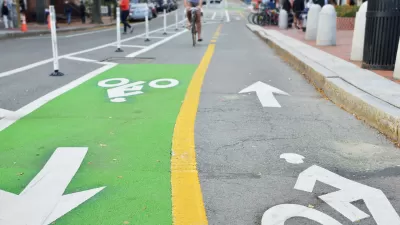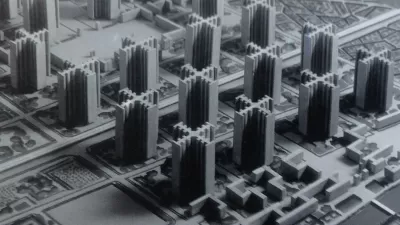After a decade in ascendance, smart growth is showing its age. As its agenda becomes "formulaic and even clinical," Kaid Benfield argues for the need to reinvigorate, or move beyond, smart growth with more attention paid to the quality of a place.
Echoing recent debates on the ostensible end to the smart growth era, reflected in a special issue of the Journal of the American Planning Association and a panel on the topic at the APA national conference, Benfield sees the need to move beyond the current fixation on measurable outcomes, and towards devoting more attention to the art of "creating a better, more sustainable world – anchored by better, more sustainable places."
Benfield writes:
"The fact that we are increasing dwelling units per acre, reducing vehicle miles traveled per capita, and reducing tons of carbon emissions compared to sprawl does not mean that we are making great people habitat. We may be creating smart growth, while in some cases doing little for people or doing less for the natural environment than we could be. I believe that achieving the fact of smart growth, where we have it, is no longer enough, and may not warrant our enthusiasm as much as it did, say, a decade ago. It is time to focus more on the quality of what we are building."
"We need to stop thinking of smart growth as a goal but instead as a tool to achieving the more demanding goal of creating better, greener, more sustainable people habitat. If we want to win hearts as well as minds, we need to start paying much more attention to placemaking, to the quality of what we advocate."
FULL STORY: Smart growth is a start. But it's not enough.

Americans May Be Stuck — But Why?
Americans are moving a lot less than they once did, and that is a problem. While Yoni Applebaum, in his highly-publicized article Stuck, gets the reasons badly wrong, it's still important to ask: why are we moving so much less than before?

Using Old Oil and Gas Wells for Green Energy Storage
Penn State researchers have found that repurposing abandoned oil and gas wells for geothermal-assisted compressed-air energy storage can boost efficiency, reduce environmental risks, and support clean energy and job transitions.

Placekeeping: Setting a New Precedent for City Planners
How a preservation-based approach to redevelopment and urban design can prevent displacement and honor legacy communities.

San Francisco’s Muni Ridership Grew in 2024
The system saw its highest ridership since before the Covid-19 pandemic, but faces a severe budget shortage in the coming year.

Colorado Lawmakers Move to Protect BRT Funding
In the face of potential federal funding cuts, CDOT leaders reasserted their commitment to planned bus rapid transit projects.

Safe Streets Funding in Jeopardy
The Trump administration is specifically targeting bike infrastructure and other road safety projects in its funding cuts.
Urban Design for Planners 1: Software Tools
This six-course series explores essential urban design concepts using open source software and equips planners with the tools they need to participate fully in the urban design process.
Planning for Universal Design
Learn the tools for implementing Universal Design in planning regulations.
Heyer Gruel & Associates PA
City of Moreno Valley
Institute for Housing and Urban Development Studies (IHS)
City of Grandview
Harvard GSD Executive Education
Salt Lake City
NYU Wagner Graduate School of Public Service
City of Cambridge, Maryland




























